How to Demonstrate ROI for GTM Strategies in a Complex B2B Landscape
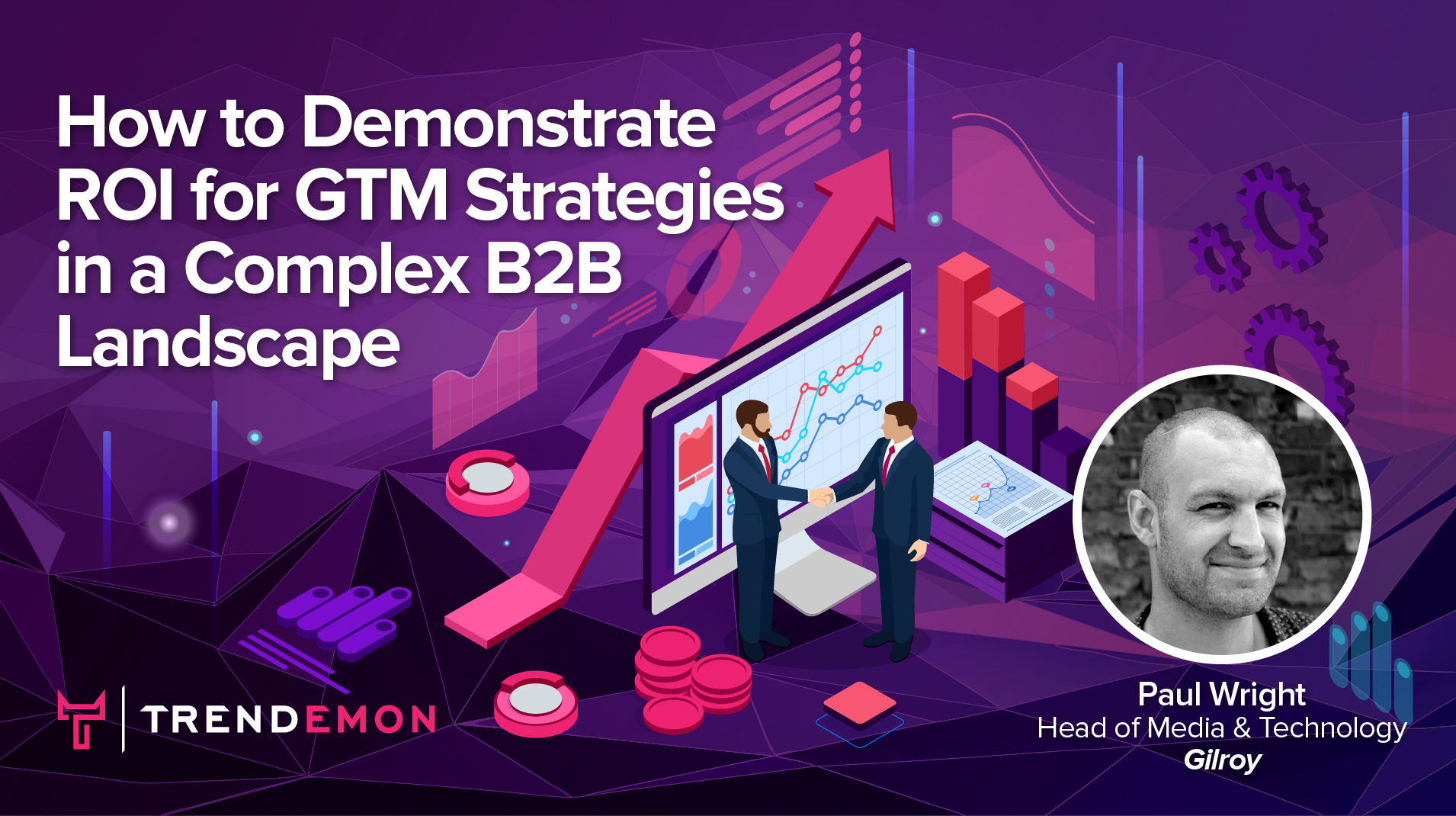
You’re a B2B company gearing up to launch a new product or service in a tough, competitive market.
Traditional marketing tactics just don’t cut it anymore, so you’re turning to GTM strategies to drive results and achieve your goals.
The challenge? How do you demonstrate ROI and measure impact in an oversaturated market where the B2B buyer’s journey is anything but simple.
In a thought-provoking discussion with Trendemon’s CEO Avishai Sharon, Paul Wright, Head of Media and Technology at Gilroy, dives into the current challenges of modern GTM strategies. He shares actionable frameworks that both startups and large enterprises can adopt to not only navigate these complexities but also prove the value of their marketing investments.
Let’s dig in.
But first…..
Addressing Key GTM challenges in the current climate
It’s not an exaggeration to say the current B2B climate is both complex and challenging.
Consider how audience preferences for consuming information have shifted. No one wants to hand over their email just to download a whitepaper, and the thought of sitting through a demo call feels like a waste of time. Worse, increased anonymity, a growing disdain for gated content, and frustration with invasive marketing tactics mean traditional marketing playbooks are quickly losing relevance.
And it doesn’t stop at changing audience behavior. A host of other issues – ranging from data privacy regulations to fragmented buying committees are pushing companies to rethink and adopt smarter, more personalized GTM strategies. The need for innovation and adaptability has never been greater.
Some key challenges highlighted in this webinar were:
→ Privacy regulations and data limitations
Laws like GDPR and the deprecation of third-party cookies limit access to buyer data, making first-party data strategies essential for effective targeting and personalization.
→ Complex buyer journeys
B2B sales cycles now involve multiple stakeholders and extended decision-making processes, making tracking and effectively influencing each touchpoint difficult.
→ Difficulty demonstrating ROI
Traditional attribution models often fail to capture the nuanced impact of marketing activities, leaving marketers struggling to prove ROI and justify further investments to leadership.
→ Fragmented technology ecosystems
Businesses face challenges in integrating multiple tools and platforms, which can lead to inconsistent insights and inefficiencies in executing GTM strategies.
→ Increasing competition for attention
As audiences become more selective and overwhelmed with information, it is more complex than ever for businesses to capture and retain attention from key decision-makers.
Whew.
Lots of problems.
Too little time.
Budgets are super tight.
Leadership needs answers.
How do we turn these limitations into opportunities while still being able to prove value?
Here’s what the speakers recommend.
Strategic GTM Moves to Stay Ahead in 2025
Drawing on his experience as a former head of finance—and now head of media and technology—Paul shares unique perspectives that bridge financial precision with marketing innovation. His approach focuses on turning data challenges into actionable insights, helping businesses navigate complexity with smarter, more targeted strategies.
Paul’s team has experimented with strategies that can help both startups and large enterprises with measurable, scalable, and value-driven GTM motions.
Proving marketing ROI with incrementality testing
Paul describes incrementality testing as an effective method for measuring the real impact of marketing efforts in the often tricky B2B world. He explains that it works by comparing the results of a specific marketing activity to a control group, helping businesses see the actual “lift” their efforts are creating.
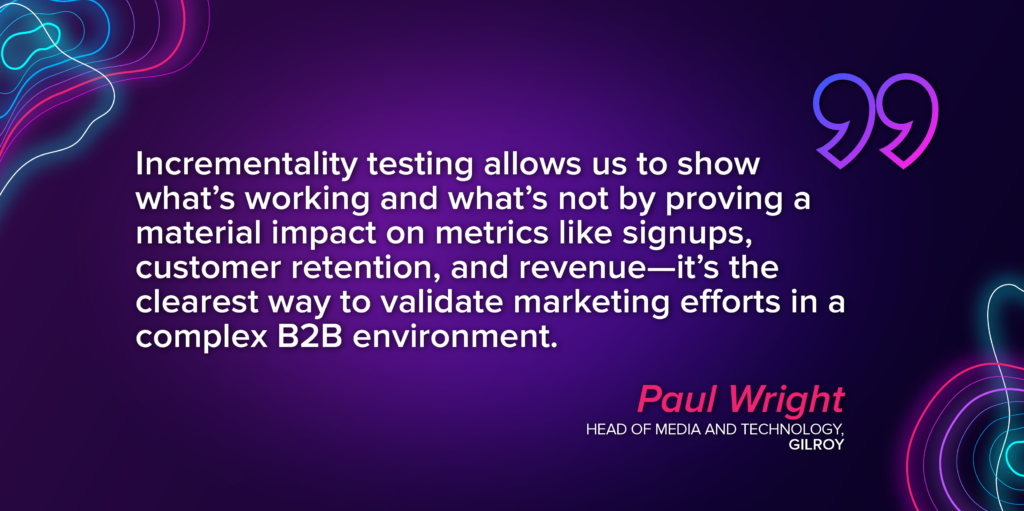
This method is beneficial because traditional attribution models often miss the mark in capturing the complexity of long sales cycles and multi-stakeholder decision-making.
Paul shares how incrementality testing has helped show clear ROI for campaigns, proving how they drove customer signups and revenue increases. It’s a straightforward way to validate what’s working, make smarter budget decisions, and focus on the strategies that truly move the needle.
Using hybrid attribution models to complement incrementality testing
We all know the bottomless black hole of attribution. While GDPR rules and the deprecation of third-party cookies have made tracking more challenging – it doesn’t help when attribution software oversimplifies the complexities of modern B2B marketing and fails to provide an accurate picture of ROI.
B2B buyer journeys are far from linear.
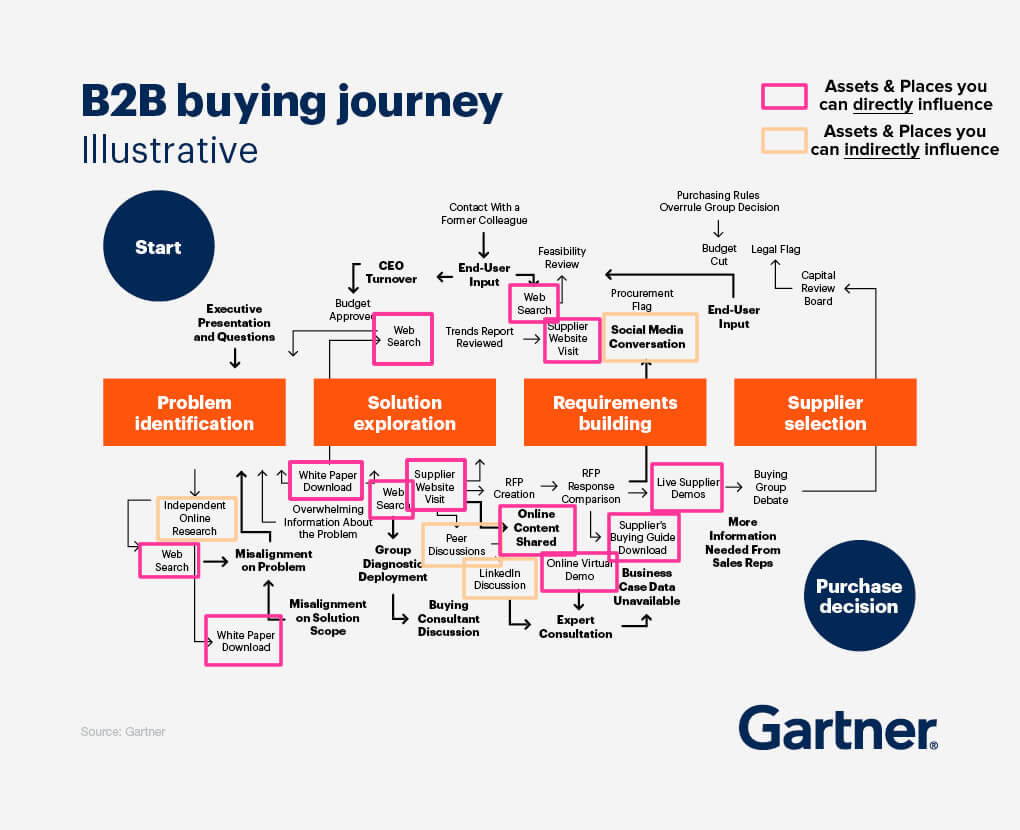
In complex B2B environments, multiple decision-makers engage with various touchpoints over an extended period. Traditional models struggle to accurately track and assign value to these multi-touch journeys, limiting their ability to capture the full impact of marketing efforts.
This is where hybrid attribution models step in.
It combines the granular insights of traditional attribution with the broader, lift-focused analysis provided by incrementality testing.
Paul highlights that while incrementality testing measures the overall lift of marketing efforts, hybrid attribution focuses on the finer details. It helps validate whether specific investments, such as a channel or content piece, are delivering as intended. Tools like Trendemon play a key role in this process by mapping content preferences to different stages of the buyer journey, enabling his team to identify what resonates with audiences and drives engagement.
By aligning these granular insights with broader strategies, businesses can refine their approach, address blind spots, and make smarter decisions about how to allocate their budgets effectively.
Localized targeting with ABM (Account-Based Marketing)
ABM is the talk of the town, but again, it’s being mishandled – so to say.
Companies are targeting every and any account they think fits into their buyer persona, often running campaigns that target multiple countries and industries at once.
But as Paul puts it, hyper localization is a smarter, more focused approach to engaging key accounts.
Talking about a case study, Paul hones down a key strategy:
Pinpointing key cities or areas where high-value accounts are concentrated (you get this information from areas where most of your buyers come from) and building targeted account lists within those regions. Media campaigns are then activated specifically for these areas, allowing for a deeper, and more precise connection with the right stakeholders.
Hyper-personalization campaigns can then be compared with broader campaigns (using the same control group but targeted at broader regions) to measure impact and incremental lift.
In a GTM strategy that focuses on ABM efforts, localized targeting ensures resources are directed toward audiences with the highest potential impact, thereby effectively reducing wasted ad spend on irrelevant audiences and minimizing the effort required to engage non-decision makers.
Using first-party data to understand content preferences
With tightening privacy regulations, increased anonymity, and the deprecation of third-party cookies, companies can no longer rely on third-party attribution data to understand their ICP – especially in the context of B2B buying trends where more than one individual is involved in the buying process. First-party data offers a more reliable and actionable foundation by capturing insights directly from customers and prospects.
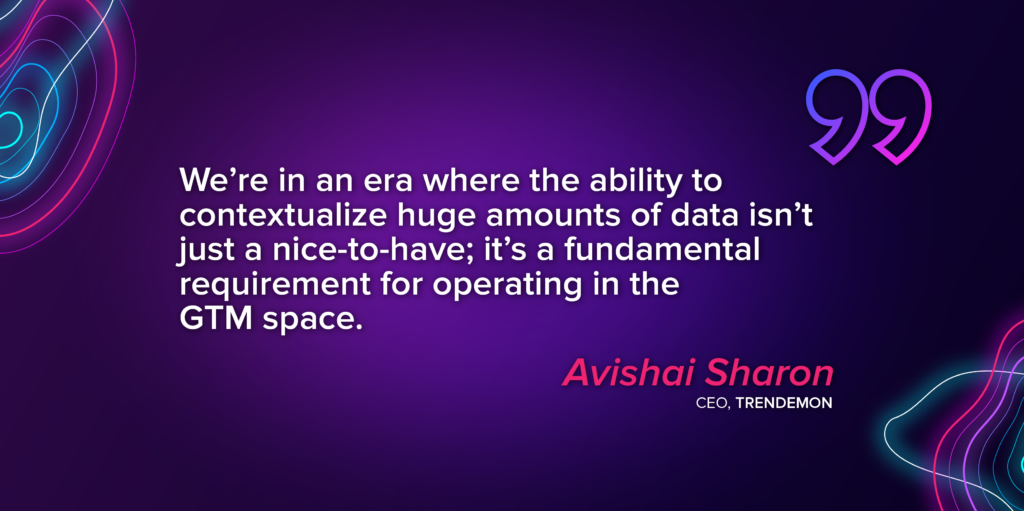
The benefit of using first-party data goes beyond analyzing behaviors.
It also helps with providing clarity on content preferences, revealing what types of assets work best at different stages of the buyer journey. Tools like Trendemon allow marketers to identify which accounts are actively engaging with the company’s content and map these interactions to key decision-making stages. This allows marketers to tailor campaigns to align with audience expectations, optimize engagement, and ultimately drive better conversions – a rare and valuable advantage in a saturated landscape.
Balancing brand-building and performance campaigns
Performance campaigns are quick, easy, and adrenaline-pumping. You get immediate results with the least amount of resistance (other than a grumpy CFO).
But an overreliance on performance campaigns can become costly – and – unsustainable (and a very angry CFO).
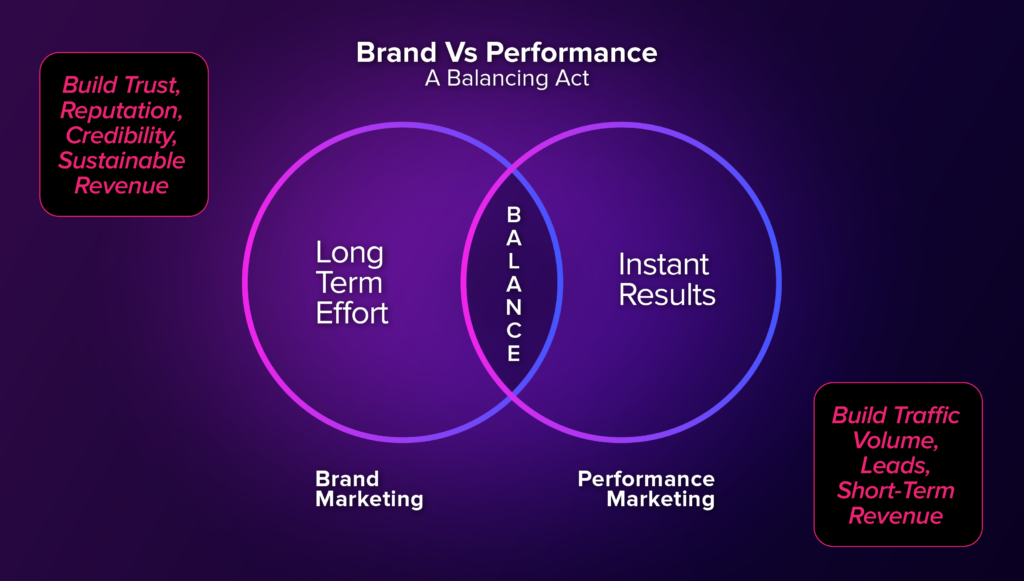
Brand campaigns, when done right can offset the overreliance on performance campaigns. Both Avishai and Paul emphasize that brand campaigns are a powerful tool for building awareness, trust, and credibility – which we know are no longer mere buzzwords but critical elements in the decision-making process of B2B buyers.
… And it’s a wrap!
But not without a quick summary.
If you want to measure GTM and ABM ROI, here’s what you can start with:
1). Use first-party data to build a foundation. Understand your ICP, their behaviors, and their content preferences. This helps you identify the right stakeholders and create campaigns that have a higher chance of being effective.
2). Test localized campaigns based on the first-party data. Focus on hyper-targeted regions or accounts to maximize efficiency and measure incremental lift.
3). Test broad campaigns and impact against localized campaigns. Expand your reach by testing a control group in broader regions. This can help you scale strategically and ‘prove’ ROI.
4). Balance brand and performance campaigns. Invest in brand-building efforts to create awareness while using performance campaigns to drive immediate results.
5). Validate strategies with incremental testing and attribution. Use these methods to measure causality, refine your approach, and prove value to leadership.
Lastly, remember, marketing isn’t about doing it all; it’s about doing what matters.